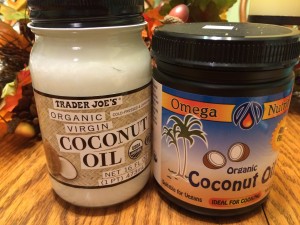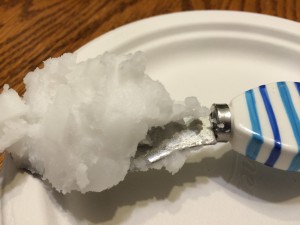 The conventional wisdom recommending individuals decrease calories, increase exercise and then wait for the pounds to fall off is incorrect. A calorie is not a calorie. When one eats sugar or carbohydrates that quickly convert to sugar, fat is produced in the body. In contrast, if one eats healthy fats, the body feels more satiated and the fat eaten converts to energy. While reducing calories matters, the type of calories eaten is an important variable.
The conventional wisdom recommending individuals decrease calories, increase exercise and then wait for the pounds to fall off is incorrect. A calorie is not a calorie. When one eats sugar or carbohydrates that quickly convert to sugar, fat is produced in the body. In contrast, if one eats healthy fats, the body feels more satiated and the fat eaten converts to energy. While reducing calories matters, the type of calories eaten is an important variable.
Several “diets” recommend eating healthy fats
Atkins, the South Beach Diet, the ketogenic diet, and the Paleo and Weston Price Traditional diets all share the philosophy that cutting carbs and increasing fats helps one lose weight.
Fallon and Enig in their book Eat Fat, Lose Fat discuss in detail the importance of healthy traditional fats in the diet. By eating traditional, nutrient dense fats such as virgin, organic coconut oil prior to or with meals, one feels more satiated and gains important energy stores. Fat regulates blood sugar and reduce cravings for carbohydrates, assisting in weight loss.
A “calorie is not a calorie”
Health experts in the documentary Fed Up, documenting America’s obesity and diabetes epidemic, emphasize the fact that not all calories are equal. The experts stress that “sugar” calories convert to fat, while fat and protein calories are converted to energy. Sugar calories include honey, maple syrup, sucrose, fruit juice and high fructose corn syrup.
WHO recommends reducing sugar intake to 5 percent of daily calories or 23 grams of sugar
The World Health Organization has repeatedly recommended reducing sugar intake to reduce the obesity epidemic. The food industry responded by lobbying Congress to stop this recommendation from impacting health legislation. The processed food lobby is so powerful that sugar percentages of daily recommended allowances have been removed from all packaged foods.
Low fat foods help one gain weight
The processed low fat foods, which are pervasive in restaurants and grocery stores, are loaded with sugar to improve the taste. Processed food manufactures quickly learned that the only way to mask the poor taste of low-fat ice cream and other processed foods, with their natural fat removed, was to add unhealthy amounts of sugar. Individuals mistakenly consume low-fat foods to help them lose weight. Instead these foods contribute to obesity.
What about diet sodas and drinks?
While these drinks contain no calories, they contain harmful artificial sweeteners known to be dangerous to health. Because these drinks taste sweet, they stimulate the desire for sugar which can lead to obesity.
How to lose weight
Losing weight can be challenging, especially as one ages. It is essential that one consume adequate fats and protein at every meal. Reducing overall sugar and calorie intake is also important. Low carb vegetables are important to health. Fruits contain a lot of sugar, so consumption should be limited. Low sugar fruits, such as berries, grapefruit and apples, are best on a diet aimed at losing weight.
Enig and Fallon detail their weight loss plan with many healthy recipes and meal plans in Eat Fat, Lose Fat. They recommend taking  1 to 2 tablespoons of virgin, organic coconut oil 20 minutes prior to each meal, in hot tea or water, to create satiation and provide nutrients. They also suggest a moderate decrease in calories so that one’s metabolism does not go into starvation mode, making it impossible to lose weight. Their plan focuses on eating traditional, nutrient dense foods three times a day with no snacks in between, including three servings of calcium rich foods such as raw milk, cheese and bone broth.
1 to 2 tablespoons of virgin, organic coconut oil 20 minutes prior to each meal, in hot tea or water, to create satiation and provide nutrients. They also suggest a moderate decrease in calories so that one’s metabolism does not go into starvation mode, making it impossible to lose weight. Their plan focuses on eating traditional, nutrient dense foods three times a day with no snacks in between, including three servings of calcium rich foods such as raw milk, cheese and bone broth.
Sources for this article include:
Enig, Mary; Fallon, Sally. (2005) Eat Fat, Lose Fat. Penguin Group, NY, NY.
http://www.thehealthyhomeeconomist.com
Written by Michelle Goldstein, Holistic Health to Go.
Eat Fat, Lose Weight was first published in Natural News on June 24, 2014.
